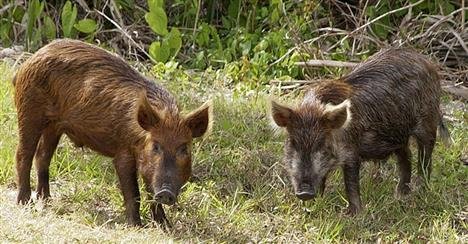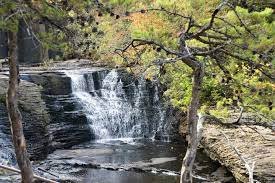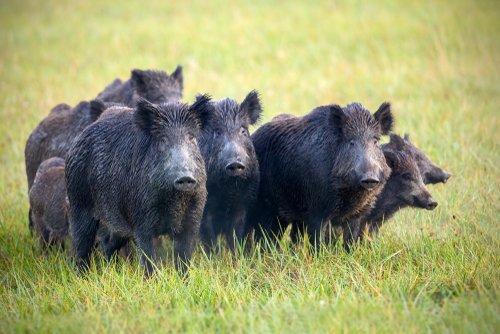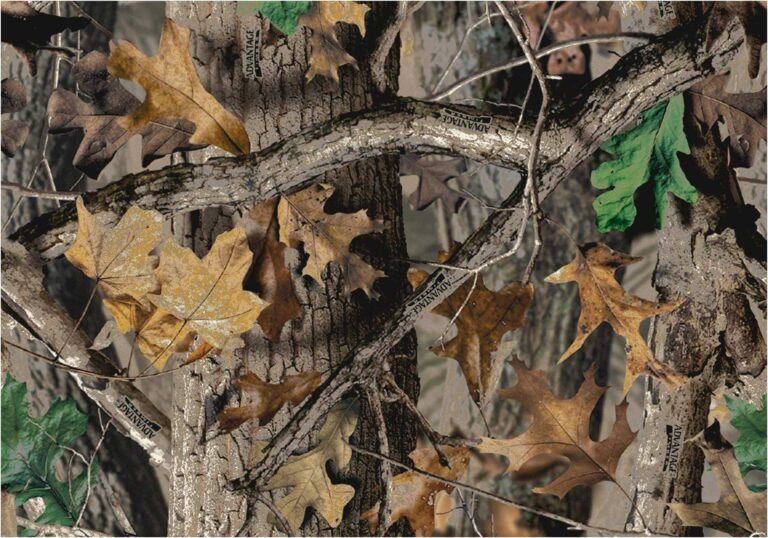The Night Hunter’s Toolkit: Gear Essentials for Successful Hunts
Nighttime hog hunting is an exhilarating and challenging endeavor that requires a unique set of skills and strategies.
As the sun sets and darkness envelops the landscape, the nocturnal habits of wild hogs come to life, making it an opportune time to track and harvest these elusive creatures. However, venturing into the dark brings its own set of risks and considerations, demanding utmost caution and preparedness.
Hunting at night is not for the faint-hearted; it necessitates a deep understanding of hog behavior, mastery of stealth techniques, and appropriate equipment. Moreover, hunters must adhere to strict safety precautions to minimize potential dangers associated with low visibility conditions.
These elements combined contribute to an unforgettable hunting experience under the starry sky. Tactics for successful night hunts revolve around exploiting hogs’ natural inclination towards darkness while capitalizing on their weaknesses.
Understanding their nocturnal patterns allows hunters to anticipate their movements and plan accordingly. Additionally, employing methods that maximize stealth becomes crucial when infiltrating their habitats unnoticed.
In order to excel in nighttime hog hunting, one must equip themselves with specialized gear designed specifically for these challenging conditions. Tools such as night vision scopes or thermal imaging devices provide hunters with enhanced visibility in the dark and grant them a significant advantage over their prey.
Furthermore, selecting firearms compatible with nighttime use ensures accuracy while maintaining personal safety. Nocturnal hog hunting opens up a world of possibilities for adventurous enthusiasts who are willing to take on this unique challenge.
The following sections will delve into more detail on safety precautions necessary for successful nighttime hunts as well as tips on choosing the right equipment tailored specifically for hunting in low-light conditions. By embracing these principles and dedicating oneself to honing the necessary skills, one can embark on unforgettable nighttime adventures chasing after these formidable creatures under the cover of darkness.
Safety Precautions for Nighttime Hog Hunting
When engaging in nighttime hog hunting, it is crucial to prioritize safety above all else.
The darkness adds an extra layer of complexity and potential danger to the already challenging endeavor of hunting wild hogs. By following a few essential safety precautions, hunters can mitigate risks and ensure a successful and secure experience.
First and foremost, it is imperative to familiarize oneself with the hunting area during daylight hours before embarking on a night hunt. Understanding the terrain, identifying potential hazards such as steep cliffs or dense brush, and locating emergency exits are essential for navigating safely in darkness.
Additionally, scouting the area provides an opportunity to identify feeding or bedding areas where hogs may gather at night. Equally important is ensuring that all hunters involved possess proper knowledge of firearms safety.
Adhering to basic principles such as keeping fingers off triggers until ready to shoot, pointing guns in safe directions, treating every firearm as if it were loaded, and never shooting at unidentified targets is non-negotiable. Nighttime hog hunting can be particularly challenging due to limited visibility, so following these fundamental rules becomes even more critical.
Another crucial aspect of safety during nighttime hog hunts is communication among hunters. Establishing clear signals or using two-way radios can help maintain constant contact while minimizing confusion or accidental discharges.
Furthermore, planning and communicating a predetermined meeting point after the hunt ensures that everyone reunites safely without getting lost in the dark wilderness. Prioritizing safety precautions while engaging in nighttime hog hunting is paramount for both individual well-being and group cohesion during these adventurous endeavors.
Familiarizing oneself with the hunting area beforehand provides vital knowledge about possible hazards and strategic areas where hogs might gather at night. Adhering strictly to firearms safety principles prevents accidents that could have devastating consequences in low-light conditions.
Maintaining effective communication among hunters guarantees coordination throughout the hunt and facilitates safe extrication from remote locations once the hunt has concluded. By exercising caution and implementing these safety measures, hunters can enjoy the thrill of nighttime hog hunting while minimizing risks.
Choosing the Right Equipment for Night Hunts
When it comes to hunting at night, having the right equipment is essential for a successful and safe experience.
The darkness poses unique challenges, and equipping yourself with the appropriate gear can significantly enhance your chances of a fruitful hunt. Let’s explore some key equipment considerations for nighttime hog hunting.
First and foremost, investing in a high-quality rifle or shotgun with reliable night vision capabilities is crucial. Opting for a firearm specifically designed for low-light conditions will provide you with optimal visibility and accuracy.
Look for models equipped with night vision scopes or thermal imaging technology, as these will enable you to detect hogs even in the darkest corners of the hunting grounds. Additionally, attaching a durable and lightweight bipod or tripod to your firearm can greatly improve stability during nighttime hunts.
The reduced visibility may require you to take longer shots, so having a sturdy rest can help maintain accuracy and increase your chances of making clean kills. Furthermore, consider equipping your weapon with an efficient muzzle brake or suppressor to reduce noise levels – this will aid in maintaining discretion during night hunts while minimizing disturbance to surrounding wildlife.
Adequate lighting plays an integral role in nighttime hog hunting as well. Utilizing powerful handheld or head-mounted spotlights is essential for spotting hogs at a distance and illuminating their vital areas when preparing for a shot.
Opting for spotlights that feature adjustable beam distance and brightness settings gives you greater control over illumination levels while conserving battery life. Additionally, consider carrying backup flashlights or headlamps in case of unforeseen circumstances such as equipment failure or emergencies.
Selecting the proper equipment is paramount when embarking on nighttime hog hunts. A reliable firearm with advanced night vision capabilities coupled with stable shooting rests ensures precision aiming even under low-light conditions.
Equipping yourself with powerful spotlights along with supplementary lighting sources ensures enhanced visibility throughout your hunt. By carefully considering these equipment factors specific to hunting at night, you set yourself up for successful and exhilarating experiences.
Hog Behavior at Night
When it comes to hunting wild hogs, understanding their behavior at night is crucial for a successful nighttime hunt. These intelligent creatures have adapted to their nocturnal lifestyle, making them more active and elusive during the dark hours.
To effectively track and pursue hogs at night, hunters must delve into their behavioral patterns. One aspect of hog behavior at night is their tendency to gather in groups known as sounders.
Sounders typically consist of a dominant sow, her offspring, and other subordinate sows. During the day, hogs disperse into separate areas for rooting and foraging but regroup at night for safety and social interaction.
Understanding this behavior can provide essential insights into how they move and react during nighttime hunts. Moreover, hogs possess remarkable senses that aid them in surviving in the darkness.
Although their eyesight is relatively poor compared to humans, they compensate with heightened hearing and an exceptional sense of smell. Their keen sense of smell allows them to detect potential threats from great distances, while their acute hearing enables them to detect subtle sounds such as the click of a safety catch or the rustling of foliage.
To outsmart these perceptive creatures during hunting excursions at night, hunters must employ stealthy movement techniques and take advantage of favorable wind conditions. Another important consideration when studying hog behavior at night is their feeding habits.
Hogs are opportunistic omnivores with a voracious appetite, which drives them to search for food throughout the night. They are notorious crop raiders but also thrive on acorns, roots, insects, small mammals, carrion – basically anything edible that they can find within their range.
By understanding hogs’ dietary preferences and patterns at different times of the year, hunters can strategically place themselves in areas where hogs are likely to be feeding during nighttime hours. Comprehending hog behavior at night opens doors to effective tactics for successful nighttime hunts.
By acknowledging their tendency to gather in sounders, their heightened senses, and their feeding habits during nocturnal hours, hunters can enhance their chances of encountering and harvesting hogs in the dark. Respect for the animals’ intelligence and adaptability is crucial as hunters strive to engage in ethical hunting practices while pursuing these elusive creatures under the cloak of night.
Stealth and Silence: The Core of Nighttime Tactics
In the realm of hunting at night, mastering the art of stealth and maintaining silence are paramount to achieving success.
As hunters venture into the darkness, they must adopt specialized techniques to minimize noise, movement, and disturbances that could alert hogs to their presence. By employing these tactics for successful night hunts, hunters can increase their chances of getting within range for a clean shot.
Firstly, when it comes to moving silently in the nocturnal hunting grounds, proper footwork is key. Choosing footwear with soft soles or utilizing specialized quiet rubber boots can significantly reduce noise caused by footsteps.
Hunters should strive for slow and deliberate movements while avoiding stepping on twigs or branches that might snap underfoot. Additionally, familiarity with the terrain is crucial in avoiding obstacles that could produce unwanted sounds or disrupt the natural environment.
Another critical aspect of stealth during nighttime hog hunting is controlling one’s scent. Hogs have an exceptional sense of smell that can easily detect human odor from a considerable distance.
To counter this, hunters should take extra precautions by using scent-eliminating sprays or soaps before embarking on their hunt. Wearing clothing treated with activated carbon-based scent control technology can also aid in masking any residual human odor.
Moreover, mastering visual camouflage techniques is essential for remaining unseen during nighttime pursuits. Wearing dark-colored clothing that blends seamlessly with the surroundings creates a silhouette that is less likely to be noticed by wary hogs.
Utilizing face masks or camouflage paint can further aid in breaking up human features and reducing visibility even in close proximity encounters. Effective stealth and maintaining silence are vital components of nighttime hog hunting tactics.
By carefully considering footwear choices, controlling scent emissions through various means, and utilizing effective visual camouflage techniques, hunters can enhance their chances of approaching hogs undetected within shooting range. These techniques require practice and precision but are invaluable tools when pursuing these elusive nocturnal creatures.
Luring Hogs with Calls and Baits
When it comes to nighttime hog hunting, using calls and baits can be highly effective in attracting these elusive creatures. Understanding the right techniques for luring hogs can significantly increase your chances of a successful hunt.
Let’s delve into some tactics that hunters employ when using calls and baits during their nocturnal pursuits. One popular method is using hog calls to mimic their vocalizations, which can pique their curiosity and draw them in closer.
The market offers a wide range of electronic callers that produce lifelike sounds, such as grunts, squeals, or even the sound of feeding hogs. These tools are designed to imitate hogs’ communication patterns, which are vital for attracting them.
It’s important to note that different calls may work better depending on the time of year and the local hog population’s behavior. Additionally, strategic baiting can provide an extra advantage in luring hogs within shooting range.
Hunters often scatter food sources such as corn or other high-calorie attractants near potential hunting areas. The aromatic scent will entice hogs from afar, increasing your chances of encountering them during hunting sessions.
When deploying bait stations, it is essential to consider wind direction and placement to ensure that the scent carries effectively while minimizing your own scent dispersal. To maximize effectiveness when combining calls and baits, many experienced hunters use a decoy as part of their setup.
A realistic decoy positioned near the bait area can create an illusion of safety for approaching hogs while also diverting their attention away from the hunter’s location. This tactic allows for better shot opportunities as hogs become focused on the decoy rather than any potential danger nearby.
Luring hogs with well-executed calls and properly placed baits is a key component of successful nighttime hog hunting tactics. By mastering these techniques and understanding how they complement each other, hunters can significantly increase their chances of attracting hogs within range for a clean and ethical shot.
Remember, it is crucial to remain patient, as hogs may take some time to investigate the calls and baits before confidently approaching. Adaptability and knowledge of hog behavior are essential when fine-tuning your luring strategies to suit the particular conditions of each hunting expedition.
Field Dressing and Meat Handling at Night
When it comes to field dressing and meat handling, the challenges are amplified when hunting at night. With limited visibility, it becomes crucial to be well-prepared and have a systematic approach to ensure the integrity of the meat.
Here are some tactics for successful night hunts in terms of field dressing and meat handling. First and foremost, it is essential to have a well-equipped field dressing kit specifically designed for nighttime hunting.
This kit should include a sharp knife with a sturdy handle, disposable gloves, game bags, a headlamp or flashlight with sufficient brightness, and zip-top plastic bags for organ storage if needed. Having these supplies readily available will streamline the process and minimize any potential mishaps.
Once you have successfully harvested your hog at night, take extra care with precision when field dressing. Start by securing the animal on its back using straps or ropes.
Begin by making an incision from the base of the sternum down towards the genitals. It’s important to be mindful of your surroundings as you navigate using your sense of touch while keeping safety as top priority.
As you progress with skinning and evisceration, make sure to keep a clean work area by utilizing game bags or tarps underneath the carcass. This will prevent dirt or debris from contaminating the meat.
Be meticulous in removing all unwanted organs while ensuring that none of them rupture during the process to avoid spoiling nearby edible tissues. Once completed, carefully transfer each cut piece into separate zip-top plastic bags labeled with corresponding dates before placing them on ice for transportation out of the field.
Remember that maintaining proper temperature control is crucial even during nighttime hunting expeditions as it ensures freshness and prevents any bacterial growth that could compromise its quality. Successful nighttime hog hunting not only requires skillful execution but also meticulous attention to detail when it comes to field dressing and meat handling.
The use of specialized equipment tailored for nighttime hunts, combined with a systematic and careful approach to skinning, evisceration, and storage, will help preserve the integrity of the meat. By following these tactics, hunters can ensure that their hard-earned harvest is handled with utmost care and will be enjoyed as delicious meals for days to come.
Real-Life Success Stories: Memorable Nighttime Hog Hunts
Hunting at night can be an exhilarating and rewarding experience, often leading to unforgettable encounters with wild hogs. In this section, we will delve into some real-life success stories that highlight the unique challenges and tactics for successful night hunts.
One memorable nighttime hog hunt took place deep in the heart of Texas. A group of skilled hunters set out on a moonlit summer night armed with thermal imaging scopes and suppressed rifles.
They knew that hogs tend to be more active during the cooler hours after sunset, so they carefully positioned themselves near a water source frequented by these elusive creatures. The silence of the night was broken only by the distant sounds of nocturnal wildlife.
Patiently waiting for several hours under cover, they spotted a group of hogs approaching cautiously. With perfect precision, they executed their plan – each hunter taking down their designated target within seconds.
The adrenaline rush was palpable as they triumphantly surveyed their successful harvest. Another memorable nighttime hog hunt took place in the dense forests of Georgia.
Equipped with state-of-the-art night vision goggles and a highly trained tracking dog, a solo hunter ventured into the darkness with determination and skillful strategy. Aware that hogs are intelligent animals known for their keen sense of smell, he meticulously planned his approach, using wind direction to his advantage.
After setting up an enticing bait station with irresistible aromas wafting through the air, he positioned himself at a safe distance and waited patiently concealed in darkness. As midnight approached, he heard rustling in the underbrush and saw multiple pairs of gleaming eyes reflecting his flashlight’s beam – a sure sign that his plan had worked like clockwork!
He swiftly dispatched one hog after another using precise shots while ensuring minimal disturbance to avoid spooking any remaining animals. In yet another thrilling account from Southern Louisiana, hunting buddies embarked on an adventurous nighttime pursuit armed with traditional archery equipment.
Knowing that hogs have a tendency to be more active during the cooler hours, they carefully navigated the dark swamps guided only by their knowledge of the terrain. With highly honed stealth and exceptional marksmanship skills, they silently maneuvered through dense vegetation, closing in on their prey.
The hunters relied on their well-practiced skills to get within close range before drawing back their bows and releasing lethal arrows with deadly accuracy. The thrill of taking down hogs using ancient weaponry in the dead of night created an unforgettable experience that forged an even deeper connection between these lifelong friends.
These real-life success stories illustrate not only the excitement but also the skill required for nighttime hog hunting. Each hunter employed different tactics and relied on specific tools to achieve their goals in challenging conditions.
Whether it was using advanced technology like thermal imaging or relying on traditional archery, these experiences serve as a testament to the adaptability and resourcefulness of hunters who choose to pursue hogs at night. Through careful planning, patience, and a deep respect for nature’s nocturnal secrets, countless hunters continue to create lasting memories while engaging in this thrilling pursuit after sundown.

Conclusion
Nighttime hog hunting presents a unique and thrilling experience for hunters willing to embrace its challenges. Hunters can greatly increase their chances of success by implementing safety precautions, utilizing appropriate equipment, understanding hog behavior, and employing stealthy tactics. Furthermore, using calls and baits strategically can effectively lure hogs closer for a clean shot.
Nighttime field dressing and meat handling require extra care and attention to ensure the quality of the meat is preserved. While some may view nighttime hog hunting as daunting, it allows hunters to test their skills under challenging conditions and develop new tactics for successful night hunts.
The darkness adds an element of excitement and mystery to the pursuit, keeping hunters engaged throughout the adventure. Moreover, hunting at night allows us to witness nature’s nocturnal activities in all its glory.
In addition to the thrill of the hunt, nighttime hog hunting also serves as an essential method for population control. Hogs have become invasive species, causing widespread destruction in various regions.
By actively participating in nighttime hunts and responsibly managing hog populations, we contribute to maintaining ecological balance while enjoying our favorite pastime. While nighttime hog hunting requires careful planning and execution, it is a rewarding endeavor that pushes hunters beyond their comfort zones.
With proper preparation and dedication to honing one’s skills in this specialized hunting field, enthusiasts can embark on unforgettable adventures while contributing positively to wildlife conservation efforts. So gear up, confidently take on the challenge of darkness, and create memories that will last a lifetime!





